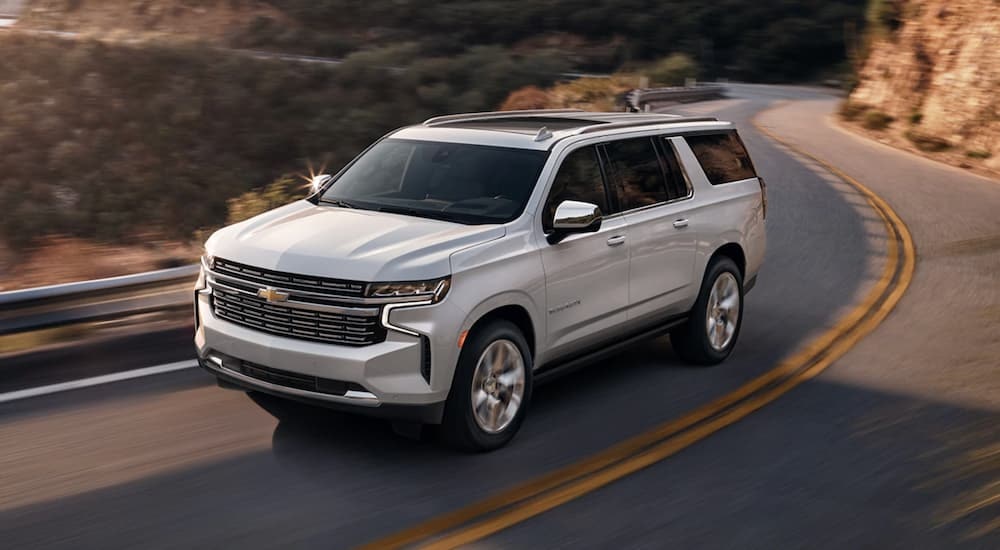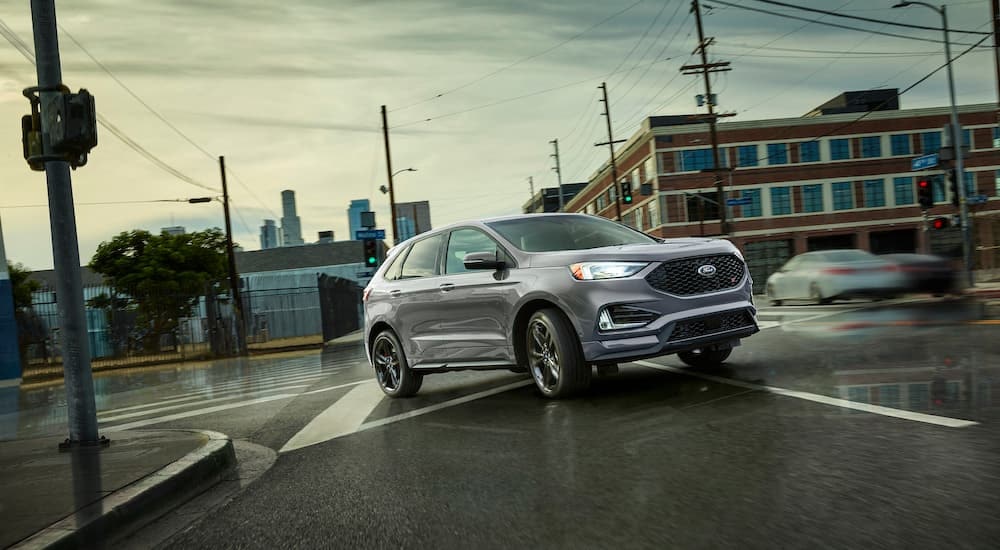
All-Wheel or Four-Wheel Drive: What’s the Difference, and Which Do You Need?
In your quest to find the right new and used SUVs for sale, you’ve almost certainly heard the terms all-wheel drive (AWD) and four-wheel drive (4WD). One could be forgiven for thinking these are two different ways of saying the same things, and some car dealers may even tell you as much. After all, if you have an all-wheel drive SUV, you, by definition, have a four-wheel drive SUV, right?
Not so fast. At Faith’s Automotive, we understand that there are subtle but important differences between these two drive systems. Furthermore, we know that choosing the wrong system will greatly affect your driving experience. This guide will help prospective SUV buyers and people looking at any other type of vehicle tell these powertrain systems apart and determine which is best for their needs.
What is Four-Wheel Drive?
We’ll start with 4WD, patented in 1893 by a British engineer named Joseph Diplock. 4WD did not become popular until WWII, when the design proved useful on the battlefield. (Interestingly, the first 4WD vehicle was built in 1899 by Ferdinand Porsche, the founder of Porsche AG.) Also known as 4X4, a four-wheel drive system connects the front and rear axles directly together through a transfer case, ensuring that each axle receives the same amount of power. By dividing power equally, the vehicle gets more overall grip and is less likely to spin the tires on rough, loose, or slippery surfaces.
Four-wheel drive is almost always a part-time system. This means the vehicle normally runs in rear-wheel drive (RWD) or front-wheel drive (FWD), and the 4WD system must be physically engaged using a manual lever, an electronic switch, or hydraulics. Four-wheel drive vehicles often have a two-speed transfer case, giving the driver the option of lower gear ratios that add traction and control for crawling over rough terrain at low speeds. Other traction-assistance features can also be added, such as sway bar disconnects and locking differentials.
Although true 4WD is not as common as it once was, you can still find it on plenty of vehicles, usually those with a traditional body-on-frame design. Current SUVs with 4X4 include the Ford Bronco, Toyota 4Runner, Jeep Wrangler, Chevy Suburban, and Land Rover Range Rover.

What is All-Wheel Drive?
All-wheel drive (AWD) is best thought of as a specific type of 4WD, similar to how all-terrain tires are a specific type of tire. Like 4WD, it sends power to the front and rear axles. However, instead of equally distributing the power through a transfer case, AWD uses a center differential and an active management system that adjusts how much power is going to each axle. An onboard computer and sensors monitor the amount of wheel grip and driver inputs to the steering wheel, throttle, and brakes. If slippage is detected in the front or rear wheels, the system sends more power to the axle that is not slipping to compensate. The latest AWD systems can even detect upcoming water and potholes and prepare accordingly.
Another way to distinguish AWD from 4WD is that you will frequently find vehicles with full-time AWD. In these machines, there is always at least some torque going to both the front and rear axles, although one axle will receive more during normal operation. In a part-time AWD system, the vehicle functions as a two-wheel drive system in normal conditions and only sends power to the other axle if the driver engages 4WD.
In recent years, all-wheel drive has overtaken four-wheel drive as the more common system. Modern SUVs incorporating full-time or part-time AWD include the Toyota Grand Highlander, Ford Edge, Honda CR-V, Kia Sportage, Jeep Cherokee, and Nissan Rogue. Compact and midsized SUVs generally send most of their drivetrain power to the front wheels, while full-size SUVs deliver more power to the rear wheels.
Is AWD or 4WD Better?
Like many things associated with SUV design, neither AWD nor 4WD is definitively a better performance option. Rather, it’s a case of each being more suited to different types of driving.
When to Choose 4WD
The classic 4WD system is best for off-roading, towing, heavy snow, and other extreme driving conditions. Sending consistent power to all four wheels provides superior traction when traveling rough, low-grip, or steep terrain. Four-wheel drive is also more ruggedly built and thus better able to handle these conditions. Because they’re primarily for off-roading, 4WD SUVs often have higher ground clearance, and the front and rear are angled specifically for clearing obstacles.
The downside is that 4X4 won’t work well in day-to-day driving. On a high-traction surface such as pavement, the front wheels need to rotate at slightly different speeds than the rear wheels around corners to ensure traction. Engaging 4WD not only reduces traction on pavement but it also stresses the axles and drivetrain, so it’s best to leave the system in two-wheel drive unless the surface gets slippery. Also, the system weighs much more than AWD, over 200 pounds in some cases. The extra weight increases traction on low-grip surfaces but produces faster tire wear, longer stopping distances, and more fuel consumption on regular roads.

When to Choose AWD
An all-wheel drive system is best for on-road use. The automatically adjusting power distribution is ideal for everyday foul weather such as rain, mild ice, and light or plowed snow. Automatic AWD works automatically on the fly, without stopping the vehicle to engage it like most 4WD systems, and also reacts to traction changes faster than a human driver can. It also gets better fuel mileage since it weighs less. Many people like that AWD does all the work so they can keep their eyes on the road.
On the other hand, although AWD will be fine for light off-roading and towing, it won’t provide the traction you need for heavy-duty adventuring, nor is it rugged enough. AWD also costs more than 4WD, so your budget may be a factor. If you decide on AWD, you must also pick between a full-time or a part-time system. Full-time AWD reacts faster and is better for moderate to severe conditions, while part-time AWD is more fuel-efficient.
Get the Right Kind of Drive
Whatever terrain you’re driving on, you need the right amount of grip. You want your vehicle to stick to the road or trail, but not so much that it comes at the expense of other performance. As such, making the right choice between all-wheel drive and four-wheel drive is important when buying a new or used SUV.
We should note that the line between AWD and 4WD gets much narrower in advanced systems. You can get 4WD with automatic settings to function more like AWD, and you can get AWD with selectable driving modes that let them behave more like 4WD. Ford’s Intelligent AWD and Intelligent 4WD are examples of these systems.
But overall, the rule of thumb to choose between AWD and 4WD is simple. AWD is the best pick if you rarely venture off-road, do heavy towing, or drive through unplowed snow. If extreme driving is something you do regularly, then you’re better off with a 4X4 SUV.
Whichever you decide on, you’ll find a big assortment of new and used SUVs for sale at Faith’s Automotive. We’re here to help people in Southern Vermont, New Hampshire, and Northern Massachusetts find the right vehicle. If you still have questions about whether all-wheel or four-wheel drive is the right choice, we’re happy to answer them and show you what vehicles best fit your needs.


